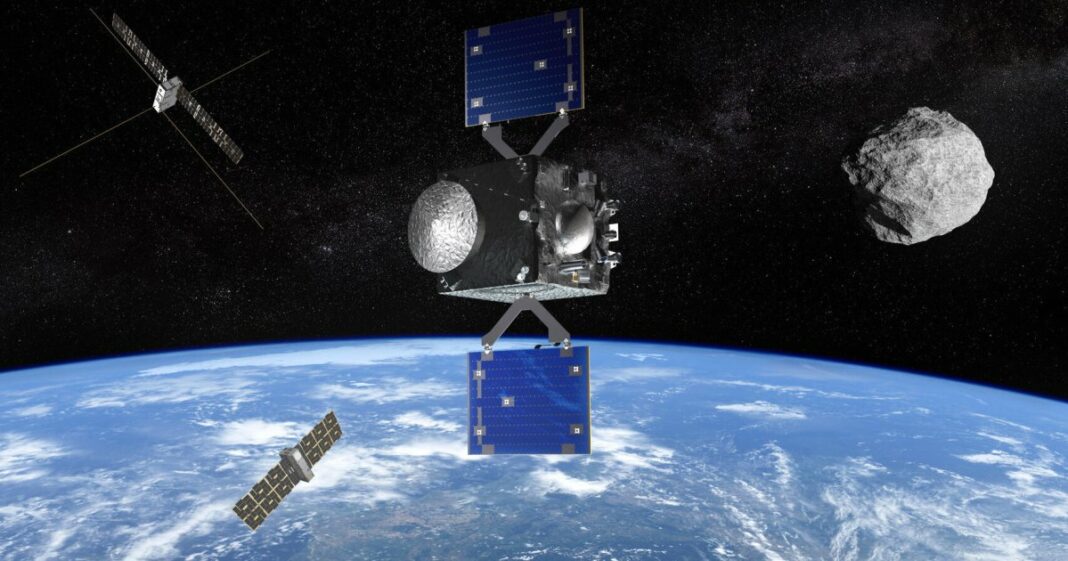Satellite to follow Empire State Building-sized asteroid as it zips by Earth
Introduction
On April 13, 2029, asteroid 99942 Apophis, roughly the size of the Empire State Building, will pass by Earth at a distance closer than some of our own satellites. To closely monitor this astronomical event, NASA and the European Space Agency have announced that they will be launching a satellite to keep track of Apophis as it makes its close flyby.
Why is this event significant?
The close approach of Apophis in 2029 is of particular interest to scientists and astronomers because of its size and proximity to Earth. While there is no chance of a direct collision with our planet during this flyby, the asteroid will come within 19,000 miles of Earth’s surface, closer than some geostationary satellites.
Understanding asteroid impacts
Studying asteroids like Apophis is important for several reasons. Asteroid impacts have played a significant role in shaping the history of our planet, and understanding their composition and behavior can help us better prepare for potential future impacts.
Planetary defense
By closely monitoring Apophis as it passes by Earth, scientists can gather valuable data that may one day be used to develop strategies for deflecting or mitigating the threat of a potential asteroid impact. This mission will provide critical information about the asteroid’s size, shape, and composition, as well as its trajectory and how it interacts with Earth’s gravitational field.
The role of the satellite
The satellite that will be following Apophis during its flyby is equipped with state-of-the-art instruments that will allow scientists to track the asteroid’s movements with unprecedented precision. This flyby presents a unique opportunity to study the asteroid up close and gather valuable data that will help us better understand its properties and behavior.
Observing the asteroid
During the flyby, the satellite will use its instruments to capture detailed images of Apophis and measure its size, shape, and rotation. Scientists will also be able to study the asteroid’s surface composition and temperature, providing crucial insights into its origins and evolution.
Conclusion
The upcoming flyby of asteroid Apophis presents a rare opportunity for scientists to study a large near-Earth asteroid up close. By launching a satellite to follow Apophis during its close approach, NASA and the European Space Agency will be able to gather valuable data that will help us better understand the properties and behavior of this potentially hazardous asteroid. This mission is an important step towards developing strategies for planetary defense and mitigating the potential threat of asteroid impacts in the future.
FAQs
1. Is there a chance that Apophis will collide with Earth during the 2029 flyby?
No, scientists have determined that there is no risk of a direct impact with Earth during this flyby. However, the close approach of Apophis will provide valuable data for studying the asteroid’s properties and behavior.
2. How big is asteroid Apophis?
Asteroid 99942 Apophis is roughly the size of the Empire State Building, with an estimated diameter of around 340 meters.
3. What will the satellite be able to observe during the flyby?
The satellite will be able to capture detailed images of Apophis, measure its size, shape, and rotation, and study its surface composition and temperature.




